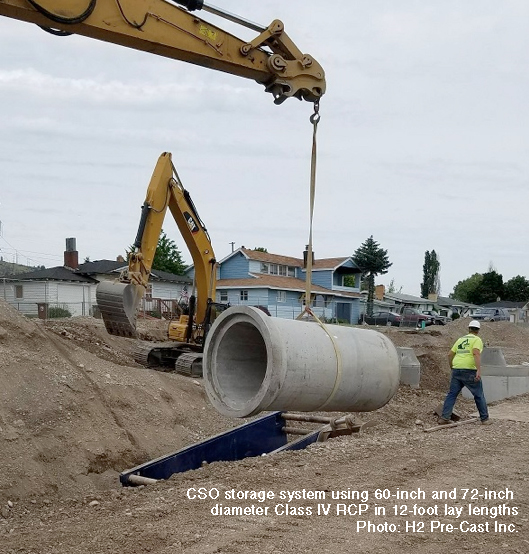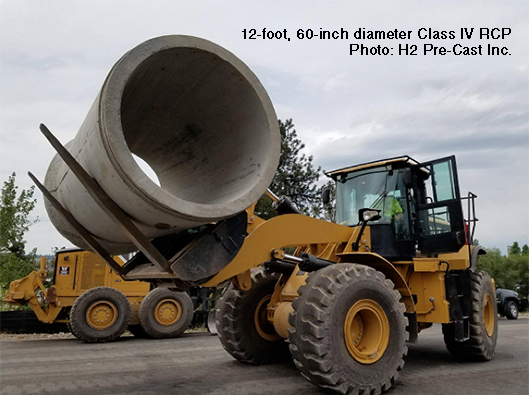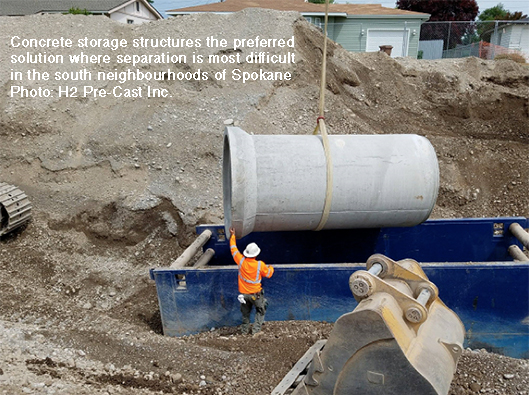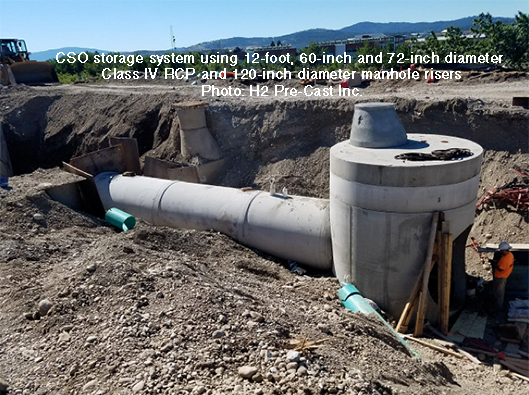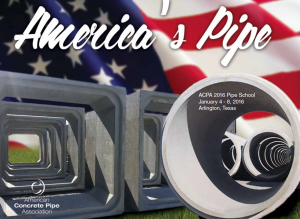Concrete Pipe News Summer 2017 – Feature Story
By: Clay Prewitt
H2 Pre-Cast Inc.
Spokane, Washington is completing a network of buried concrete combined sewer overflow (CSO) structures. These structures store excess water during heavy rainstorms and rapid snowmelt, until the storm surge subsides and the water can be sent to the Riverside Park Water Reclamation Facility for treatment. The structures are included in Spokane’s Cleaner River Faster initiative that reduces the amount of untreated sewage from combined sanitary and storm sewers that discharge into the Spokane River. The 380,000 gallon, 60-inch diameter pipe, CSO Basin 41 Control Facility was constructed using 60-inch and 72-inch diameter Class IV reinforced concrete pipe (RCP) in 12-foot lay lengths. In addition, the system accommodates 120-inch diameter precast concrete manholes in the storage structure.
When Spokane’s sewer system was installed in the late 1800s, sanitary sewage and stormwater were removed via a singular pipeline system, and all pipes drained directly into the Spokane River or Hangman Creek. A Wastewater Treatment Plant was installed by 1958 with a capacity of 50 million gallons a day. Treated sewage was discharged into the river. On days when flow exceeded the treatment plant’s capacity, untreated runoff was discharged into the river.
In the 1980s, Spokane constructed separate stormwater systems and eliminated combined sewers in most of its northern area. The remaining combined sewers are in areas that are not easily separated. Constructing underground concrete tanks to hold the combined sewage during a storm, and then draining it to the wastewater treatment plant when the storm surge subsides, is the preferred solution where separation is most difficult in the south neighbourhoods. One such storage structure is Basin 41, comprised of the 12-foot lengths of RCP and 120-inch diameter manholes.
The contractor, N & N Excavation LLC, preferred 12-foot lengths with single O-Ring gaskets to limit the number of joints. The pipe meets the requirements of the City, Washington State Department of Transportation (WSDOT), and ASTM C-76 (Standard Specification for Reinforced Concrete Culvert, Storm Drain, and Sewer Pipe).
Prior to shipment, a D-Load test was required, and WSDOT had to stamp the pipe approved for shipment according to the project specifications. After installation, the pipeline was hydrostatically tested for water tightness. Due to the tight timeframe of the project, H² Precast produced the 60-inch diameter pipe and Cascade Concrete Products produced the 72-inch diameter pipe.
The City amended its CSO Reduction Plan (now being implemented) with a network of storage structures, and created an Integrated Clean Water Plan that considers all flows that go into the Spokane River.
Sources:
www.facebook.com/h2precast/photos/pcb.1623590914340303/1623588201007241
https://my.spokanecity.org/publicworks/wastewater/cso/
https://cforjustice.org/2016/11/08/spokanes-solution-to-combined-sewage-overflows/


